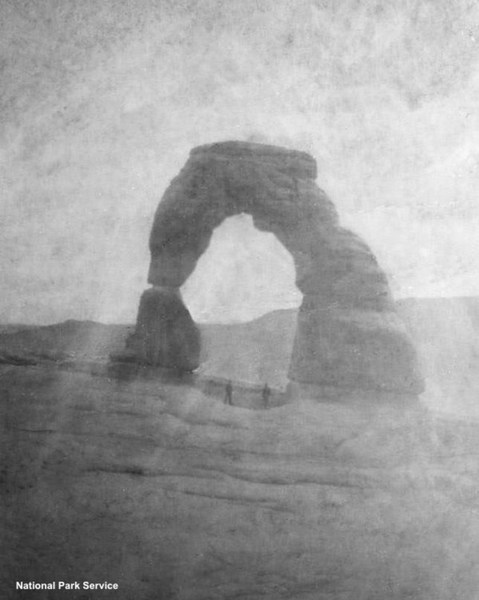Dublin Core
Title
Description
Delicate Arch is a famous part of Utah’s landscape, featured on gift shop coffee mugs and our state license plate. Although visitors come from all over the world to see Delicate Arch, the small creek flowing past the trailhead’s parking lot is also an important part of the unique landscape of Arches National Park. Long before it achieved international fame, the land below Delicate Arch once served the crops and cattle of the Wolfe family, who used the nearby springs to completely alter the dry desert landscape.
Indigenous peoples used the area we now know as Arches National Park for millennia, harvesting plants and strategically following precious water sources across the landscape. In the late 19th century, a Civil War veteran named John Wolfe claimed the hundred acre land below Delicate Arch as his own homestead. He came to raise crops and cattle, as well as to benefit from the arid climate believed to improve overall health. He named his ranch “Bar DX” and grazed cattle that eventually devastated native grasses in the area. The freshwater stream running near Wolfe's settlement -- called “Salt Wash” -- made the area perfect for farming. John and his son, Fred, put the stream to work by damming the water to raise melons and pumpkins and create irrigation ditches for root vegetables.
John’s daughter, Flora, joined the family ranch in 1906. Flora brought with her an interest in photography. John built a sturdy cabin for her that had an actual floor and real windows and gave her a camera with photo developing equipment. His gifts of a cabin and camera made the Wolfe legacy at Arches permanent. Flora captured the first-ever photograph of Delicate Arch, and today, the cabin John built for her is one of the only surviving remnants of the ranch at the Delicate Arch trailhead.
More than a place of natural wonders, Arches National Park is also a place of unique human history. Next time you visit the famous Utah landmark, make sure you visit the old wooden cabin by the parking lot and the critically important freshwater stream that, at one time, sustained a whole family.
Creator
Source
_______________
See “Wolfe Ranch, Arches National Park,” National Park Service Places, accessed July 2022; Historic American Buildings Survey, “Wolfe Ranch, Moab, Grand County, Historic American Buildings Survey (HABS) No. UT-141,” Library of Congress, accessed July 2022; James R. McDonald Architects Historical Research Associates, Inc., “Wolfe Ranch Historic Structures Report Arches National Park,” October 1999, accessed July 2022.

